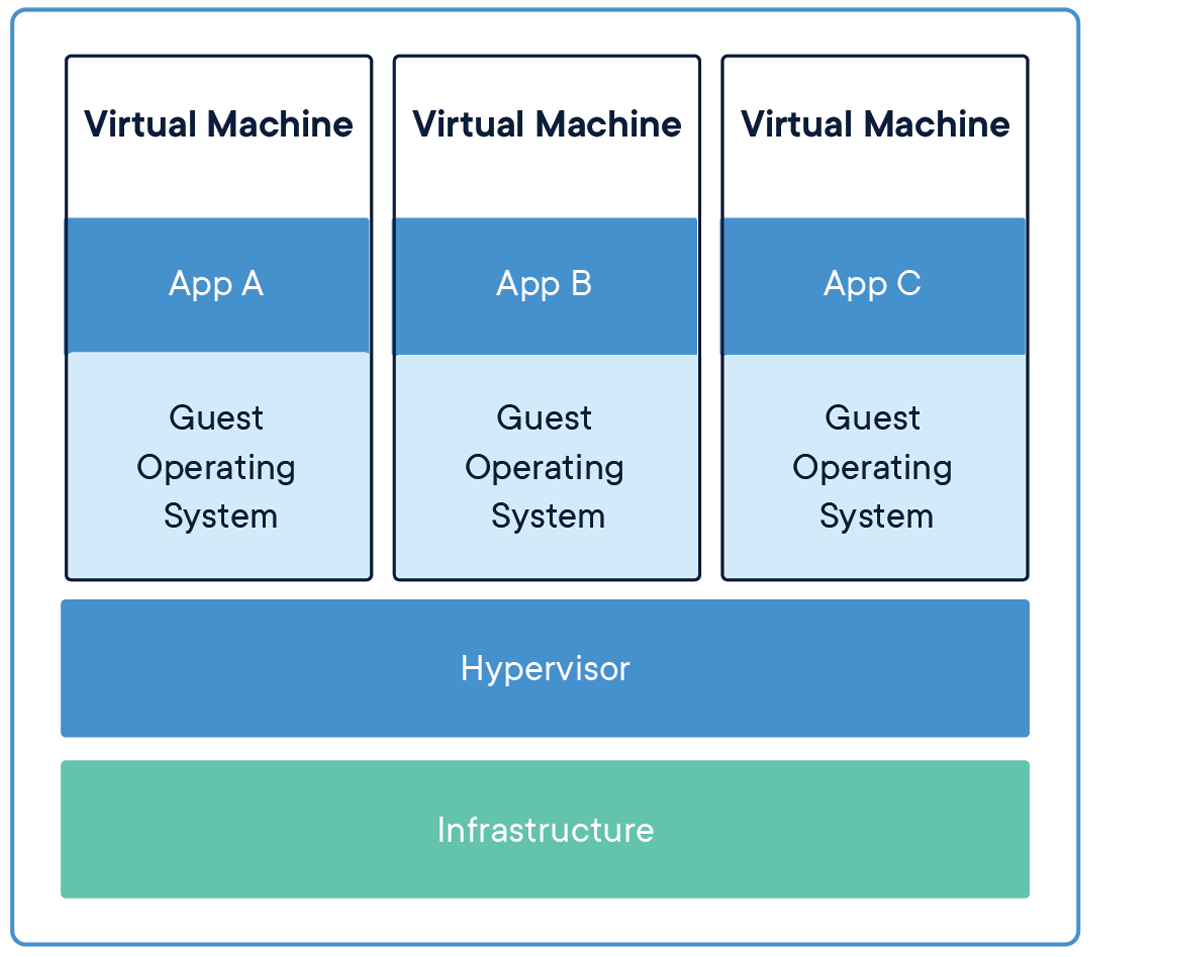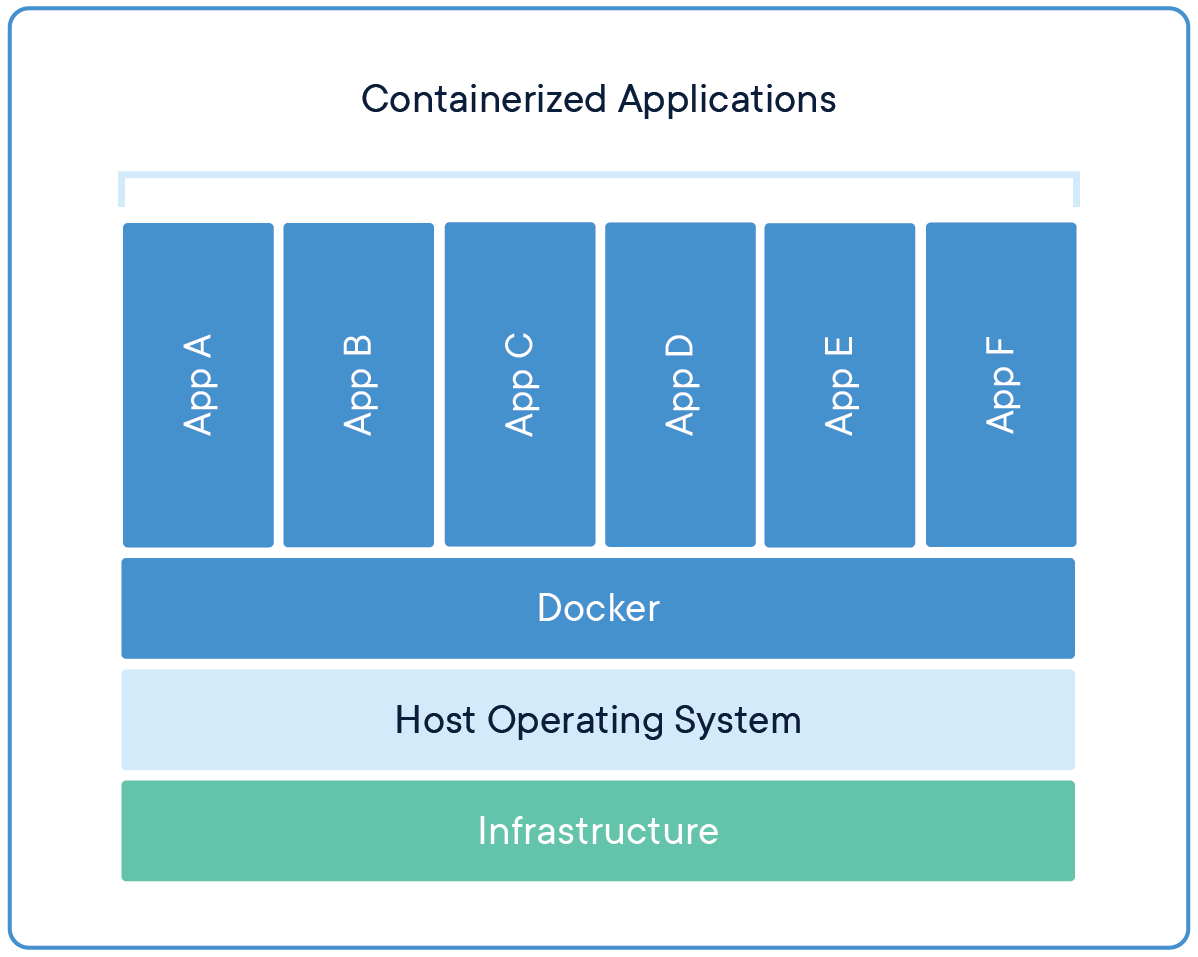What is docker
Docker is a container management service. The keywords of Docker are develop, ship and run anywhere. The whole idea of Docker is for developers to easily develop applications, ship them into containers which can then be deployed anywhere.
A container is a standard unit of software that packages up code and all its dependencies so the application runs quickly and reliably from one computing environment to another.
A Docker container image is a lightweight, standalone, executable package of software that includes everything needed to run an application: code, runtime, system tools, system libraries and settings.
features for Docker:
- Standard: Docker created the industry standard for containers, so they could be portable anywhere
- Lightweight: Containers share the machine’s OS system kernel and therefore do not require an OS per application, driving higher server efficiencies and reducing server and licensing costs
- Secure: Applications are safer in containers and Docker provides the strongest default isolation capabilities in the industry
Docker vs Virtual Machine
Containers and virtual machines have similar resource isolation and allocation benefits, but function differently because containers virtualize the operating system instead of hardware. Containers are more portable and efficient.
 Containers are an abstraction at the app layer that packages code and dependencies together. Multiple containers can run on the same machine and share the OS kernel with other containers, each running as isolated processes in user space.
Containers are an abstraction at the app layer that packages code and dependencies together. Multiple containers can run on the same machine and share the OS kernel with other containers, each running as isolated processes in user space.
 Virtual machines (VMs) are an abstraction of physical hardware turning one server into many servers. The hypervisor allows multiple VMs to run on a single machine. Each VM includes a full copy of an operating system, the application, necessary binaries and libraries - taking up tens of GBs. VMs can also be slow to boot.
Virtual machines (VMs) are an abstraction of physical hardware turning one server into many servers. The hypervisor allows multiple VMs to run on a single machine. Each VM includes a full copy of an operating system, the application, necessary binaries and libraries - taking up tens of GBs. VMs can also be slow to boot.
Underlying techs
Docker is written in Go and takes advantage of several features of the Linux kernel to deliver its functionality.
Namespaces
Docker uses a technology called namespaces to provide the isolated workspace called the container. When you run a container, Docker creates a set of namespaces for that container.
These namespaces provide a layer of isolation. Each aspect of a container runs in a separate namespace and its access is limited to that namespace.
Docker Engine uses namespaces such as the following on Linux:
- The pid namespace: Process isolation (PID: Process ID).
- The net namespace: Managing network interfaces (NET: Networking).
- The ipc namespace: Managing access to IPC resources (IPC: InterProcess Communication).
- The mnt namespace: Managing filesystem mount points (MNT: Mount).
- The uts namespace: Isolating kernel and version identifiers. (UTS: Unix Timesharing System).
Control groups
Docker Engine on Linux also relies on another technology called control groups (cgroups). A cgroup limits an application to a specific set of resources. Control groups allow Docker Engine to share available hardware resources to containers and optionally enforce limits and constraints. For example, you can limit the memory available to a specific container.
Union file systems
Union file systems, or UnionFS, are file systems that operate by creating layers, making them very lightweight and fast. Docker Engine uses UnionFS to provide the building blocks for containers. Docker Engine can use multiple UnionFS variants, including AUFS, btrfs, vfs, and DeviceMapper.
Docker Engine
Docker Engine is a client-server application with these major components:
- A server which is a type of long-running program called a daemon process (the dockerd command)
- A REST API which specifies interfaces that programs can use to talk to the daemon and instruct it what to do
- A command line interface (CLI) client (the docker command)
The CLI uses the Docker REST API to control or interact with the Docker daemon through scripting or direct CLI commands. Many other Docker applications use the underlying API and CLI.
Docker Hub
Docker Hub and Docker Cloud are public registries that anyone can use, and Docker is configured to look for images on Docker Hub by default.
When you use the docker pull or docker run commands, the required images are pulled from your configured registry. When you use the docker push command, your image is pushed to your configured registry.
Docker objects
When you use Docker, you are creating and using images, containers, networks, volumes, plugins, and other objects. This section is a brief overview of some of those objects.
IMAGES
An image is a read-only template with instructions for creating a Docker container. Often, an image is based on another image, with some additional customization.
CONTAINERS
A container is a runnable instance of an image. You can create, start, stop, move, or delete a container using the Docker API or CLI. You can connect a container to one or more networks, attach storage to it, or even create a new image based on its current state.
SERVICES
Services allow you to scale containers across multiple Docker daemons, which all work together as a swarm with multiple managers and workers. Each member of a swarm is a Docker daemon, and the daemons all communicate using the Docker API.
Write a Dockerfile
FROM imagename:version
# The LABEL instruction adds metadata to an image
LABEL version="1.0"
# The ARG instruction defines a variable that users can pass at build-time to the builder with the docker build command using the --build-arg <varname>=<value> flag.
ARG user1=someuser
# The ENV instruction sets the environment variable <key> to the value <value>
ENV abc=hello
# The WORKDIR instruction sets the working directory for any RUN, CMD, ENTRYPOINT, COPY and ADD instructions that follow it in the Dockerfile
WORKDIR /bar
ADD . /bar
# Same as 'ADD', but without the tar and remote URL handling.
COPY /foo /quux
# by default is /bin/sh -c on Linux or cmd /S /C on Windows
RUN command
# The VOLUME instruction creates a mount point with the specified name and marks it as holding externally mounted volumes from native host or other containers.
VOLUME /myvol
# The EXPOSE instruction informs Docker that the container listens on the specified network ports at runtime. By default, EXPOSE 80/udp
EXPOSE 8000
# An ENTRYPOINT allows you to configure a container that will run as an executable.
ENTRYPOINT command param1 param2
# The main purpose of a CMD is to provide defaults for an executing container.
CMD command param1 param2
PS: .dockerignore file helps to avoid unnecessarily sending large or sensitive files and directories to the daemon and potentially adding them to images using ADD or COPY.
Build command:docker build -t shykes/myapp .
Then you can use docker image ls to check your built image, and run docker run --env <key>=<value> imagename. At last, docker ps can be used to find what containers are running at the moment.